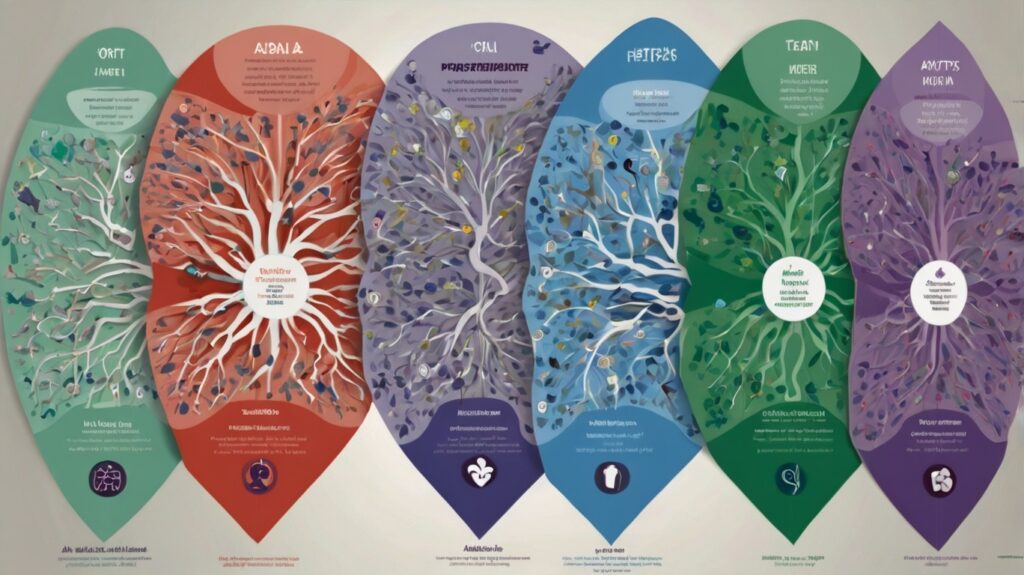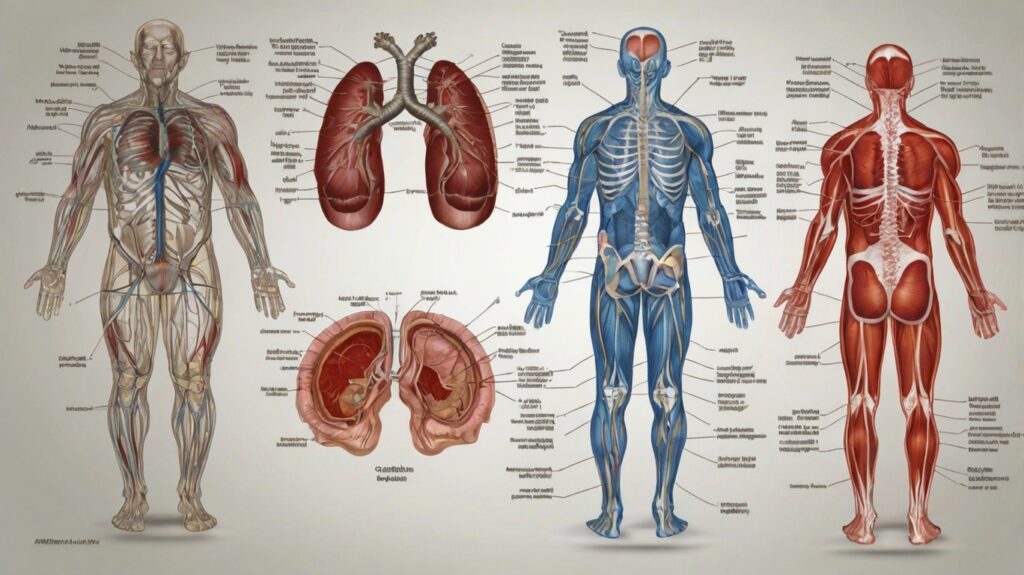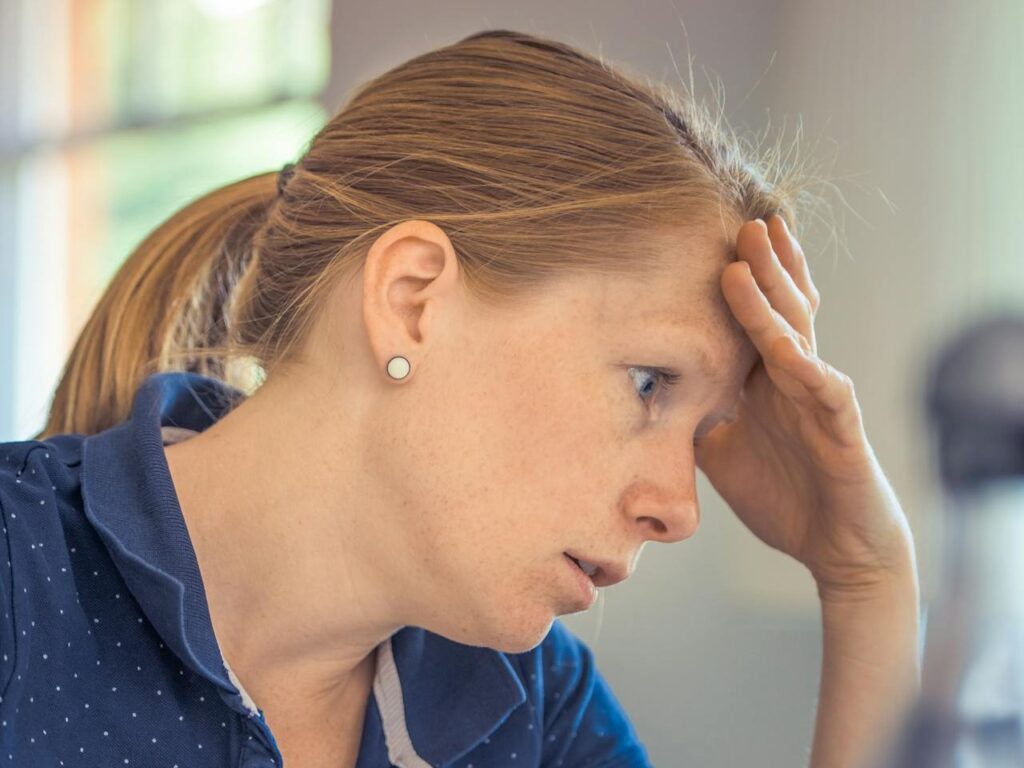Anxiety affects millions of people worldwide, yet many struggle to understand whether their feelings are normal stress responses or signs of something more serious. If you’ve ever wondered “What is anxiety and do I have it?” you’re not alone. This comprehensive guide will help you understand anxiety, recognize its symptoms, and discover effective ways to manage it.
What Is Anxiety? Understanding the Basics

Anxiety is your body’s natural alarm system designed to protect you from danger. It’s a complex emotional and physiological response that involves three key components:
- Emotional component: Feelings of fear, worry, or uneasiness
- Physiological component: Physical symptoms like rapid heartbeat, sweating, or muscle tension
- Cognitive component: Racing thoughts, difficulty concentrating, or catastrophic thinking
Normal Anxiety vs. Anxiety Disorders
Not all anxiety is problematic. Normal anxiety serves an important purpose—it helps you stay alert during job interviews, motivates you to study for exams, and keeps you safe in potentially dangerous situations. This type of anxiety is:
- Temporary and situation-specific
- Proportional to the actual threat
- Doesn’t significantly interfere with daily life
- Resolves once the stressor is removed
However, when anxiety becomes persistent, excessive, and interferes with your daily functioning, it may indicate an anxiety disorder. Clinical anxiety disorders are characterized by:
- Persistent worry that lasts for months
- Symptoms that are disproportionate to the actual threat
- Significant interference with work, relationships, or daily activities
- Physical symptoms that occur even when there’s no immediate danger
Types of Anxiety Disorders: The Anxiety Spectrum

Understanding the different types of anxiety disorders can help you identify whether your experiences align with clinical conditions. Here are the most common anxiety disorders:
Generalized Anxiety Disorder (GAD)
GAD involves persistent and excessive worry about various aspects of life, including work, health, family, and finances. People with GAD often describe feeling like they’re waiting for the other shoe to drop, even when things are going well.
Key characteristics:
- Excessive worry about everyday situations
- Difficulty controlling worry
- Physical symptoms like fatigue, muscle tension, and sleep disturbances
- Restlessness and feeling on edge
Panic Disorder
Panic disorder is characterized by recurrent, unexpected panic attacks—sudden episodes of intense fear that peak within minutes. These attacks can be so severe that people often mistake them for heart attacks.
Common panic attack symptoms:
- Racing or pounding heart
- Sweating and trembling
- Shortness of breath or feeling of choking
- Chest pain or discomfort
- Nausea or stomach distress
- Dizziness or lightheadedness
- Fear of losing control or dying
Social Anxiety Disorder
Social anxiety disorder involves intense fear of social situations where you might be judged, embarrassed, or humiliated. This goes beyond normal shyness and can significantly impact your ability to function in social or professional settings.
Post-Traumatic Stress Disorder (PTSD)
PTSD can develop after experiencing or witnessing a traumatic event. It involves re-experiencing the trauma through flashbacks or nightmares, avoiding trauma-related triggers, and experiencing heightened anxiety and hypervigilance.
Specific Phobias
Phobias involve intense, irrational fears of specific objects or situations, such as heights, flying, spiders, or medical procedures. The fear is disproportionate to the actual danger posed.
Recognizing Anxiety Symptoms: Physical and Emotional Signs

Anxiety manifests differently in each person, but there are common patterns of symptoms to watch for:
Physical Symptoms
- Rapid heartbeat or palpitations
- Shortness of breath or feeling like you can’t catch your breath
- Sweating, especially in palms or underarms
- Trembling or shaking
- Muscle tension, particularly in shoulders, neck, and jaw
- Headaches or migraines
- Digestive issues, including nausea, diarrhea, or stomach pain
- Fatigue or feeling easily tired
- Sleep disturbances, including difficulty falling asleep or staying asleep
Emotional and Cognitive Symptoms
- Persistent worry or fear
- Feeling restless or on edge
- Irritability or mood swings
- Difficulty concentrating or mind going blank
- Racing thoughts
- Catastrophic thinking or expecting the worst
- Feeling overwhelmed or out of control
- Avoidance of certain situations or activities
Behavioral Changes
- Procrastination or avoidance behaviors
- Seeking excessive reassurance from others
- Perfectionism or fear of making mistakes
- Social withdrawal or isolation
- Increased use of alcohol, drugs, or other substances
- Compulsive behaviors or rituals
Modern Anxiety Triggers: Understanding Today’s Stressors

While anxiety has always been part of the human experience, modern life presents unique challenges that can trigger or worsen anxiety symptoms:
Technology and Social Media
Constant connectivity and social media comparison can fuel anxiety through:
- Fear of missing out (FOMO)
- Cyberbullying or online harassment
- Information overload and news anxiety
- Sleep disruption from screen time
- Reduced face-to-face social interaction
Economic and Career Pressures
Financial stress and job insecurity contribute to anxiety through:
- Uncertainty about job stability
- Rising cost of living
- Student loan debt
- Gig economy pressures
- Work-life balance challenges
Environmental and Global Concerns
Climate change, political instability, and global events can create a sense of helplessness and chronic worry about the future.
Anxiety Across Different Life Stages
Anxiety in Teenagers
Adolescent anxiety often manifests as:
- Academic pressure and performance anxiety
- Social anxiety related to peer acceptance
- Body image concerns
- Identity and future-related worries
- Separation anxiety from family
Workplace Anxiety
Professional anxiety can include:
- Performance anxiety and imposter syndrome
- Fear of public speaking or presentations
- Conflict avoidance with colleagues
- Deadline pressure and time management stress
- Career advancement anxiety
Anxiety in Older Adults
Senior anxiety may involve:
- Health-related fears and medical anxiety
- Financial security concerns
- Social isolation and loneliness
- Grief and loss-related anxiety
- Cognitive decline fears
How to Tell If Your Anxiety Needs Professional Attention
Use this three-question framework to assess whether your anxiety might be a disorder:
- Does it interfere with your life? If anxiety prevents you from working, maintaining relationships, or enjoying activities you once loved, it may be time to seek help.
- How severe is it? Rate your anxiety on a scale of 1-10. If you’re consistently experiencing anxiety at a 7 or higher, professional support could be beneficial.
- Is it proportional to the situation? If your anxiety response seems much larger than the actual threat or problem, this could indicate an anxiety disorder.
Treatment Options: Professional Help for Anxiety
Therapy Approaches
Cognitive Behavioral Therapy (CBT)
CBT is the gold standard for anxiety treatment. It helps you:
- Identify negative thought patterns
- Challenge irrational beliefs
- Develop coping strategies
- Practice exposure to feared situations
Other Effective Therapies:
- Acceptance and Commitment Therapy (ACT)
- Dialectical Behavior Therapy (DBT)
- Eye Movement Desensitization and Reprocessing (EMDR) for trauma-related anxiety
- Mindfulness-Based Stress Reduction (MBSR)
Medication Options
When therapy alone isn’t sufficient, medication can be helpful:
Antidepressants (SSRIs/SNRIs):
- First-line treatment for most anxiety disorders
- Take 4-6 weeks to show full effects
- Examples: sertraline, escitalopram, venlafaxine
Anti-anxiety medications:
- Benzodiazepines for short-term relief
- Should be used cautiously due to dependency risk
- Examples: lorazepam, alprazolam
Other options:
- Beta-blockers for performance anxiety
- Buspirone for generalized anxiety
- Gabapentin for certain anxiety conditions
Self-Help Strategies: Managing Anxiety on Your Own

Lifestyle Modifications
Regular Exercise
Physical activity is one of the most effective natural anxiety treatments:
- Releases endorphins and reduces stress hormones
- Provides a healthy outlet for nervous energy
- Improves sleep quality
- Aim for at least 30 minutes of moderate exercise most days
Sleep Hygiene
Quality sleep is crucial for anxiety management:
- Maintain a consistent sleep schedule
- Create a relaxing bedtime routine
- Limit caffeine and screens before bed
- Keep your bedroom cool, dark, and quiet
Nutrition and Anxiety
Certain dietary changes can help reduce anxiety:
- Limit caffeine and alcohol
- Eat regular, balanced meals to stabilize blood sugar
- Include omega-3 fatty acids (fish, walnuts, flaxseeds)
- Consider magnesium-rich foods (leafy greens, nuts, seeds)
Stress Management Techniques
Mindfulness and Meditation
Regular mindfulness practice can significantly reduce anxiety:
- Start with just 5-10 minutes daily
- Use apps like Headspace or Calm for guidance
- Practice deep breathing exercises
- Try progressive muscle relaxation
Grounding Techniques
When anxiety strikes, use the 5-4-3-2-1 technique:
- 5 things you can see
- 4 things you can touch
- 3 things you can hear
- 2 things you can smell
- 1 thing you can taste
Gradual Exposure
Slowly and systematically face your fears:
- Start with less threatening situations
- Gradually work up to more challenging scenarios
- Celebrate small victories along the way
- Don’t rush the process
Building a Support System
- Connect with trusted friends and family
- Consider joining anxiety support groups
- Practice open communication about your struggles
- Set healthy boundaries in relationships
- Seek professional help when needed
The Relationship Between Anxiety and Other Mental Health Conditions
Anxiety often co-occurs with other mental health conditions:
Depression and Anxiety
- Share similar brain chemistry imbalances
- Often occur together (comorbidity)
- May require integrated treatment approaches
ADHD and Anxiety
- Attention difficulties can increase anxiety
- Anxiety can worsen ADHD symptoms
- Requires careful diagnosis and treatment planning
Substance Use and Anxiety
- Some people self-medicate anxiety with alcohol or drugs
- Substance use can worsen anxiety over time
- Recovery requires addressing both conditions
Long-Term Prognosis and Recovery
The good news about anxiety is that it’s highly treatable. With proper treatment:
- 70-80% of people with anxiety disorders see significant improvement
- Many people learn to manage symptoms effectively
- Early intervention leads to better outcomes
- Recovery is possible, even with severe anxiety
Factors that improve prognosis:
- Early treatment
- Strong support system
- Commitment to therapy and self-care
- Healthy lifestyle habits
- Medication compliance when needed
When to Seek Emergency Help
Seek immediate medical attention if you experience:
- Thoughts of self-harm or suicide
- Severe panic attacks that don’t respond to usual coping strategies
- Inability to function in daily life
- Substance abuse as a way to cope with anxiety
- Physical symptoms that could indicate a medical emergency
Conclusion: Taking the Next Step
Understanding anxiety is the first step toward managing it effectively. Whether you’re experiencing normal stress responses or dealing with a clinical anxiety disorder, remember that help is available and recovery is possible.
If you recognize yourself in the symptoms and situations described in this article, don’t hesitate to reach out for professional support. A mental health professional can provide an accurate diagnosis and develop a personalized treatment plan that works for you.
Remember, seeking help for anxiety is a sign of strength, not weakness. Millions of people successfully manage anxiety and live fulfilling lives. With the right combination of professional treatment, self-care strategies, and support, you can too.
Take action today: If you’re struggling with anxiety, consider scheduling an appointment with a mental health professional, talking to your primary care doctor, or calling a mental health helpline for guidance and support.
Frequently Asked Questions
Q: Can anxiety be cured completely?
A: While anxiety disorders are chronic conditions, they are highly treatable. Many people learn to manage their symptoms so effectively that anxiety no longer significantly impacts their daily lives. With proper treatment, you can expect substantial improvement and the ability to live a full, productive life.
Q: How long does it take for anxiety treatment to work?
A: The timeline varies depending on the treatment approach. Therapy typically shows benefits within 6-12 weeks, while medications may take 4-6 weeks to reach full effectiveness. Some people notice improvements sooner, while others may need longer. Consistency with treatment is key to success.
Q: Is it normal to have anxiety every day?
A: While everyone experiences some level of stress or worry daily, persistent, intense anxiety that interferes with your daily functioning is not normal and may indicate an anxiety disorder. If you’re experiencing significant anxiety most days for several weeks or months, it’s worth discussing with a healthcare professional.
Q: Can lifestyle changes alone treat anxiety?
A: For mild anxiety, lifestyle changes like regular exercise, stress management, and healthy sleep habits can be very effective. However, moderate to severe anxiety typically requires professional treatment. Lifestyle changes work best as part of a comprehensive treatment plan that may include therapy and/or medication.
Q: What’s the difference between stress and anxiety?
A: Stress is typically a response to a specific external trigger and usually resolves when the stressor is removed. Anxiety can occur without a clear trigger and tends to be more persistent. Anxiety often involves worry about future events, while stress is usually focused on current situations.



